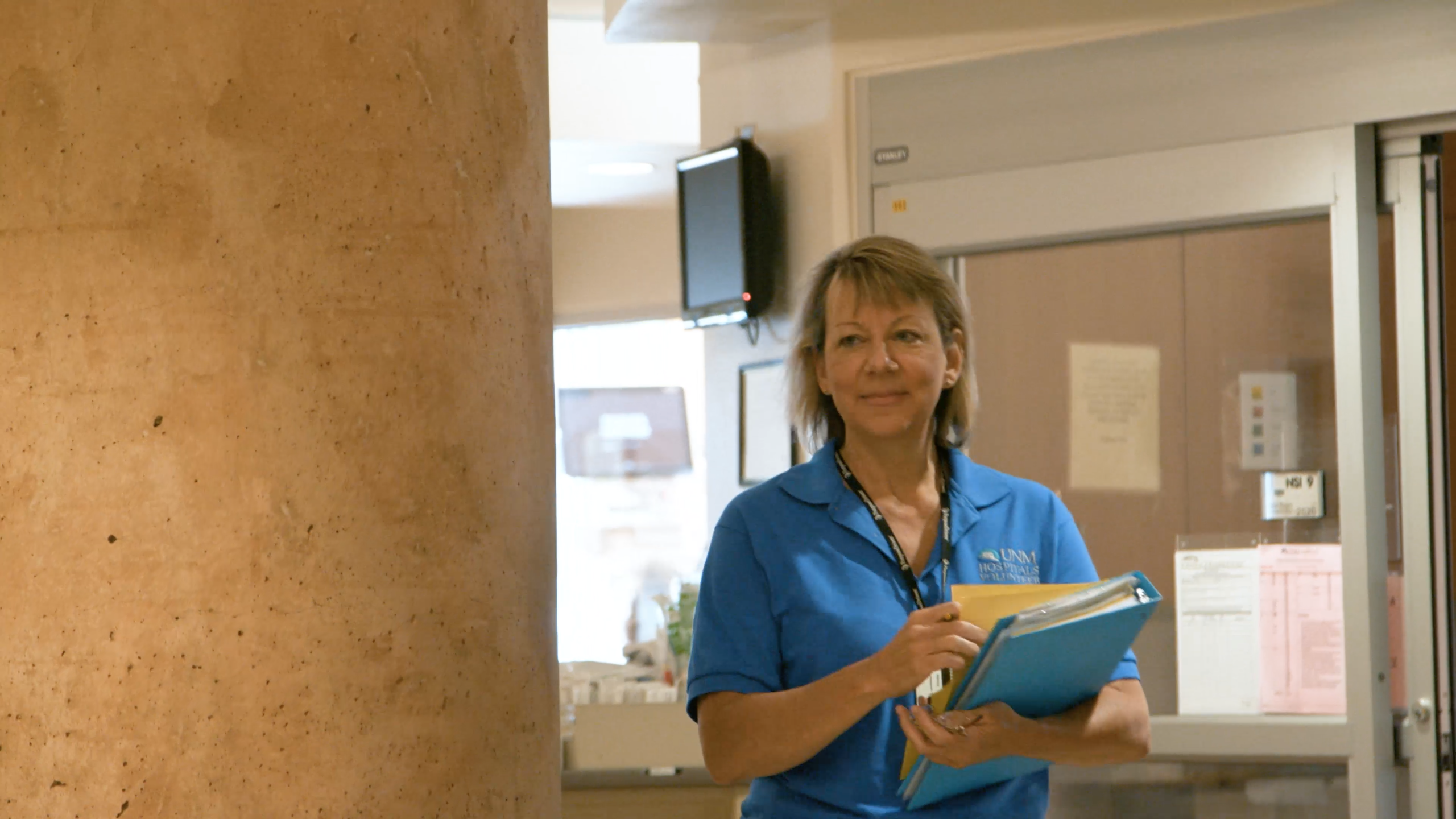
Article by Michael Haederle, UNMH Media Relations Department. Reposted with permission.
When Nancy Hansen arrived at University of New Mexico Hospital in October 2016 to see a friend whose husband was briefly a patient in the Neurosciences Intensive Care Unit, the normally cheerful woman was terrified.
Hansen pulled out a notebook and pen and promptly started jotting down the names of the attending physician, the charge nurse and the bedside nurses. Then she calmly explained to her friend how a teaching hospital functions and what to expect.
The woman’s anxiety subsided, and her husband, marveling at the transformation, asked Hansen her secret.
“It’s because I know how she feels,” Hansen told him. Twenty months earlier, Hansen had been the one keeping an anxious vigil in the Neurosciences ICU for her husband Michael, who had suffered a ruptured brain aneurysm. Sadly, after nearly three days, doctors decided there was nothing more that could be done, and he was removed from life support.
Knowing that she had just helped her friend through a tough time, Hansen had an epiphany. “By the end of the night, I thought, ‘I need to design this role. I need to come in here and volunteer and do this.’”
And that is how she came to spend an afternoon each week visiting with patients and their families in her role as the unit’s volunteer navigator.
Newly arrived family members are easy to spot, Hansen says. “Their eyes are glazed over and they have this ‘Oh my gosh, what just happened to me?’ look.”
She is quick to reassure them that it is natural to feel disoriented. “That’s normal – that’s what this does to you when you have a loved one hovering between life and death,” she says. “It impacts you in a way that is really truly impossible to describe until you’ve been through it.”
Have a story to share about navigation in action? Email admin@patientnavigatortraining.org.